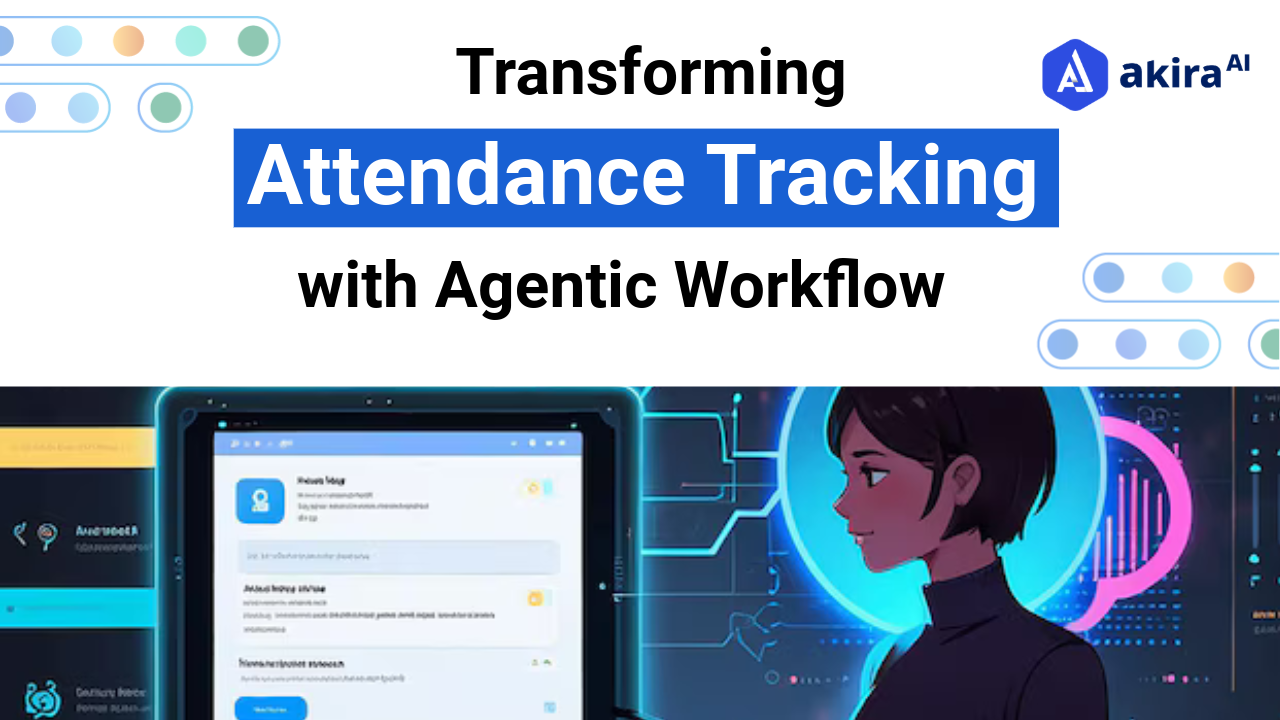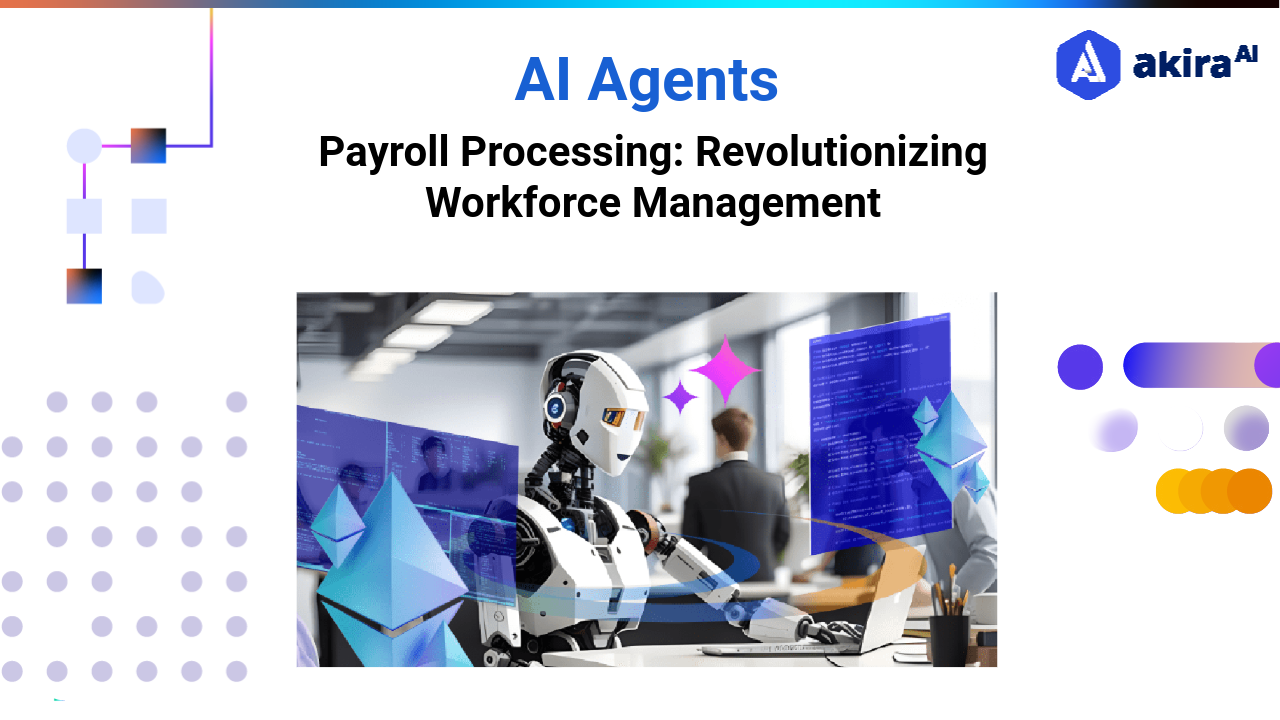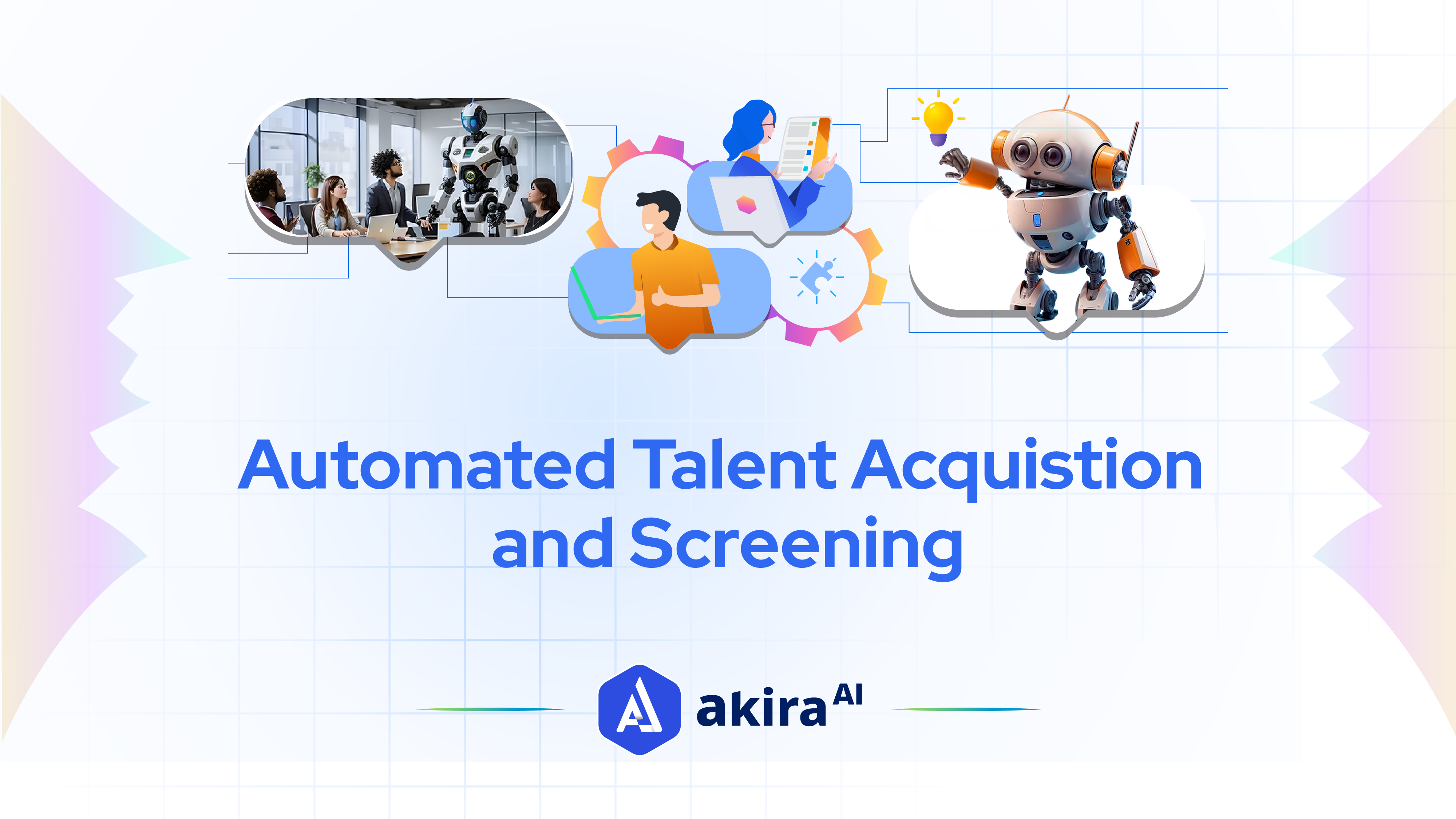Key Insights
Akira AI's multi-agent system revolutionizes attendance management by automating processes, reducing manual errors, and enhancing data accuracy. With real-time data collection and seamless scalability, HR teams can focus on strategic tasks while ensuring compliance. This AI-driven solution improves operational efficiency and boosts employee satisfaction through accurate payroll and fair compensation. Transform your attendance management with Akira AI today!
In today’s fast-paced work environments, managing attendance efficiently is crucial for both employees and organizations. Traditional attendance systems often involve manual processes, which are time-consuming, prone to errors, and difficult to scale. To address these issues, AI-powered multi-agent systems provide a transformative solution by automating and optimizing attendance processing, ensuring data accuracy and efficiency. In this blog, we will explore how Akira AI’s multi-agent framework simplifies attendance management by leveraging advanced AI agents to handle diverse tasks seamlessly.
What are AI Agents and how do they handle attendance processing?
AI Agents
AI Agents are computer programs developed to perform their tasks by making self-guided decisions based on observations of their environment, input, and specific objectives. Unlike stiff automation systems, an AI agent thinks, adapts, and acts independently. They are designed to perceive their environment, learn from past experiences, and make decisions to attain certain objectives.
Everything from the execution of simple single-task programs to complex multi-process system execution is an AI agent. Particularly, they are good in dynamic and unpredictable environments; they can access the Internet, interact with applications, process large volumes of data, conduct transactions, and continually improve their methods based on feedback.
AI Agents in Attendance Processing
AI agents in attendance processing automate and streamline the entire attendance management lifecycle, from data collection to reporting. These intelligent agents integrate with various attendance systems, such as biometric scanners, mobile apps, and access cards, to gather real-time data. They validate and cross-check this data to ensure accuracy, significantly reducing manual errors. By generating real-time insights and reports, these agents provide HR departments with actionable data to improve workforce management, enhance payroll accuracy, and increase overall operational efficiency.
Challenges Faced in Attendance Processing
Attendance tracking poses several challenges, especially in large organizations:
-
Manual Errors and Inconsistencies: Manual attendance tracking often leads to errors such as incorrect data entry, missed punches, and discrepancies in time records. These mistakes can result in inaccurate payroll calculations and unfair compensation, leading to employee dissatisfaction and potential legal issues.
-
Scalability Issues: As organizations grow, managing attendance data from a larger workforce becomes increasingly complex. Manual systems or outdated software may struggle to handle the volume of data, resulting in delays and inefficiencies in attendance tracking and reporting.
-
Compliance and Regulatory Risks: Ensuring compliance with labor laws, company policies, and contractual obligations is a significant challenge. Organizations must accurately track working hours, overtime, breaks, and leaves to adhere to regulations. Failure to do so can result in legal penalties, fines, and reputational damage.
-
Time-Consuming Processes: Manual attendance processing is labor-intensive and time-consuming, requiring significant administrative effort to collect, verify, and report data. This diverts HR resources from more strategic tasks and can lead to delays in payroll processing and other HR functions.
-
Integration Difficulties: Many organizations use multiple systems and tools for different HR functions, such as attendance, payroll, and leave management. Integrating these disparate systems to ensure seamless data flow and accurate reporting is often challenging, leading to data silos and inefficiencies.
How AI Agents Address These Challenges
Multi-agent systems offer significant advantages in addressing the above challenges. By automating tasks like data collection, validation, and compliance, AI agents eliminate manual errors and reduce the burden on HR teams. These systems can scale effortlessly, managing vast volumes of data from multiple sources, while ensuring policy compliance through intelligent validation checks. Additionally, AI agents can provide accurate overtime tracking, ensuring that payroll is processed fairly and accurately.
Akira AI’s Multi-Agent Solution

Akira AI’s multi-agent solution incorporates state-of-the-art AI technology to revolutionize attendance management. The system’s flexible architecture allows it to integrate with various data sources, making it a scalable and comprehensive solution for businesses of all sizes.
Process Flow
-
Data Collection: Attendance data is captured through various methods to ensure accuracy and flexibility in tracking. The Biometric System utilizes biometric devices to collect attendance data, providing a secure and efficient way to record employee check-ins and check-outs.
Additionally, a Mobile App allows employees to clock in and out conveniently from their smartphones, offering a user-friendly alternative for attendance logging. For situations where digital methods may not be feasible, Manual Entry enables HR or supervisors to input attendance data directly, ensuring that all attendance information is accurately recorded regardless of the method used.
-
Data Aggregation: Collected data from biometric systems, mobile apps, and manual entries are aggregated.
-
Validation and Compliance Check: The aggregated data undergoes a thorough cross-check against company schedules, leave records, and established policies to ensure accuracy and compliance. During this validation process, any errors or discrepancies are promptly identified and flagged for review.
When issues arise, notifications are sent to HR or managers, enabling them to take appropriate action and resolve any discrepancies efficiently. This proactive approach helps maintain the integrity of attendance records and ensures that all data aligns with organizational standards.
-
Attendance Calculation and Reporting: The validated data is utilized to accurately calculate work hours, overtime, and leave balances, ensuring that all calculations align with payroll requirements. Following these calculations, attendance reports are generated, which provide a detailed overview of employee attendance. These reports are then sent to HR for review and record-keeping purposes. Employees also receive their attendance reports through the employee portal, promoting transparency and self-service access to their attendance information.
-
Payroll Integration: The final attendance data is seamlessly integrated with the payroll system, facilitating accurate payroll processing based on validated attendance records. This integration minimizes the risk of discrepancies and ensures that employees are compensated correctly for their hours worked.
-
Feedback Loop: To enhance overall accuracy and efficiency, a continuous feedback loop is established. This mechanism allows for ongoing improvements in the data collection, validation, and calculation processes, ensuring that the attendance management system evolves and adapts to meet organizational needs effectively.
Tech Stack Used: AI Agents for Attendance Tracking
|
Layer |
Component |
Stack |
|
Multi-Agent Layer |
Master Orchestrator Agent |
Langchain, Autogen - Orchestrates agents and manages workflows efficiently. |
|
Data Collection Agent |
LLM, Data Tools (PostgreSQL, AWS Athena) - Automates data aggregation from biometric systems and apps. |
|
|
Validation and Compliance Agent |
LLM, Validation Tools (Scikit-learn) - Ensures compliance with policies and checks for data errors. |
|
|
Attendance Calculation Agent |
LLM, Math Tools (NumPy, Pandas) - Handles payroll and work hour calculations. |
|
|
Backend |
Backend Pipelines |
FastAPI, Flask - APIs built for secure and scalable operations |
|
Frontend |
User Interface |
React, Angular - Developed a user-friendly and intuitive employee portal and HR dashboard |
|
Infrastructure |
Cloud Infrastructure |
AWS, GCP, Azure - Cloud hosting for flexible and scalable operations. |
Components of Multi-Agents System
-
Master Orchestrator Agent: The Master Orchestrator oversees the entire attendance processing workflow, ensuring seamless integration and coordination among all specialized components. It acts as the central hub, managing memory, context, and the data layer, facilitating communication between different modules.
By directing the flow of information and processing requests, it ensures that data collected from various sources is accurately validated and processed. The orchestrator also monitors the overall system performance, providing feedback and making necessary adjustments to optimize the accuracy and efficiency of the attendance processing system.
-
Data Collection: The Data Collection agent specializes in gathering attendance data from various input methods, including biometric systems, mobile applications, and manual entries. It ensures that data from different sources is collected in a standardized format, making it easier for subsequent processing.
This module leverages advanced data tools to aggregate and preprocess the raw attendance data, ensuring that it is ready for validation and further analysis. Integrating multiple data collection methods ensures comprehensive and accurate attendance tracking.
-
Validation and Compliance: The Validation and Compliance agent focuses on ensuring that the collected attendance data adheres to company policies, schedules, and leave records. It cross-checks the aggregated data against predefined rules and regulations, identifying discrepancies and potential errors.
This module uses specialized validation tools to perform detailed checks and balances, ensuring data integrity. When issues are detected, it sends notifications to HR or managers for resolution. This component ensures that only accurate and compliant data proceeds to the next stage of processing, thereby maintaining the integrity of the attendance records.
-
Attendance Calculation: The Attendance Calculation agent is responsible for computing work hours, overtime, and leaves based on the validated data. It uses advanced mathematical tools to accurately calculate the attendance metrics required for payroll processing.
This module ensures that all calculations align with the company’s payroll policies and labor laws. Providing precise calculations helps in generating accurate attendance reports and ensures that employees are compensated correctly for their work hours and overtime.
Traditional vs Agentic AI Attendance Processing System
|
Aspect |
Traditional AI |
AkiraAI Multi-Agent System |
|
Scalability |
Limited scalability as systems grow, often struggling with increased data loads. |
Highly scalable, managing vast amounts of attendance data across multiple sources seamlessly. |
|
Accuracy |
Prone to manual errors due to reliance on human input for data validation and compliance checks. |
Automated validation and compliance checks ensure high data accuracy, minimizing errors. |
|
Compliance |
Requires manual monitoring and frequent interventions to ensure adherence to policies. |
Automated policy compliance checks are integrated into the system, reducing the need for manual oversight. |
|
Data Collection |
Relies heavily on manual input and limited integration with biometric or mobile systems. Prone to inconsistencies and errors due to disparate data sources. |
Seamlessly integrates biometric systems, mobile apps, and manual entries into a unified data collection process. Aggregates data efficiently. |
|
Data Validation and Compliance |
Data validation often requires manual checks, increasing the risk of oversight and errors. Compliance with company policies and regulations relies on periodic manual reviews. |
Automated validation processes cross-check data against schedules, leave records, and policies in real time. Ensures continuous compliance with minimal need for manual intervention, improving overall data integrity. |
|
Attendance Calculation |
Calculation of work hours, overtime, and leaves often involves manual steps, increasing the likelihood of errors. May struggle with real-time updates and adjustments, |
Utilizes advanced mathematical tools for accurate and automated calculations of work hours, overtime, and leaves. Ensures real-time updates and adjustments, providing accurate data for timely payroll processing. |
Key Benefits of AI Agents for Attendance Tracking
-
Increased Accuracy: Automated data validation eliminates manual errors. By leveraging AI agents, the system can cross-check attendance records against multiple data points, ensuring accuracy and consistency. This reduces the likelihood of human errors, such as incorrect data entry or missed updates, leading to more reliable attendance tracking.
-
Scalability: Capable of handling attendance data from multiple sources in real time. A multi-agent solution can seamlessly integrate with various attendance systems, such as biometric scanners, mobile apps, and access cards. This allows it to process large volumes of data concurrently, making it suitable for organizations of all sizes, from small businesses to large enterprises.
-
Time Savings: Drastically reduces the time spent on manual attendance tracking and reporting. AI agents can automate routine tasks like data collection, validation, and reporting, freeing up HR personnel to focus on more strategic activities. Real-time processing means that attendance records are always up-to-date, eliminating the need for time-consuming manual adjustments.
-
Compliance Assurance: Automatically ensures policy compliance with leave and work schedules. The solution can be programmed to adhere to company policies and regulatory requirements, such as working hours, overtime rules, and leave entitlements. It can flag non-compliance issues promptly, helping organizations avoid legal penalties and maintain a fair work environment.
-
Enhanced Payroll Accuracy: Properly tracks overtime, reducing payroll discrepancies. By accurately recording hours worked, including overtime and leaves, the system ensures that employees are compensated correctly. This reduces the risk of payroll errors, which can lead to employee dissatisfaction and potential legal disputes. Automated payroll integration further streamlines the process, ensuring timely and precise salary payments.
Conclusion: AI Agents for Attendance Tracking
AI-powered multi-agent systems are transforming the way companies handle attendance processing. With Akira AI’s advanced architecture, businesses can automate and optimize their attendance workflows, improving accuracy, efficiency, and compliance. The adoption of these systems leads to significant time savings and more reliable data, enabling HR teams to focus on more strategic tasks.
Ready to Optimize Your Attendance System?



.png?width=2000&height=1125&name=MicrosoftTeams-image%20(1).png)



